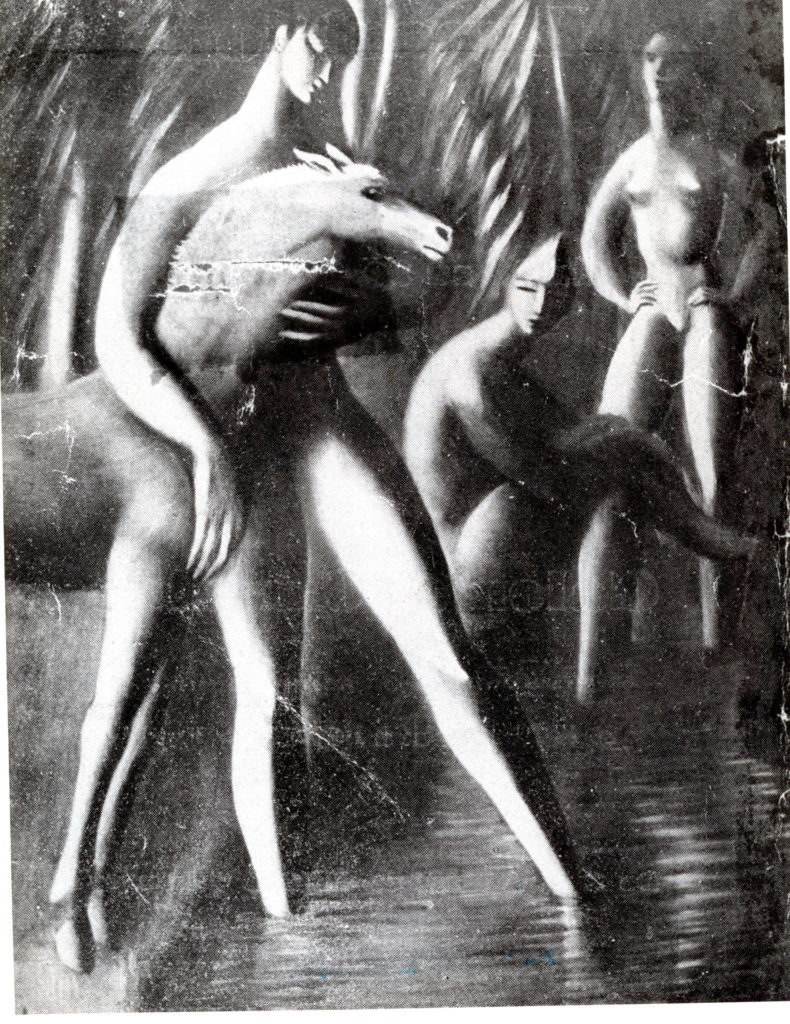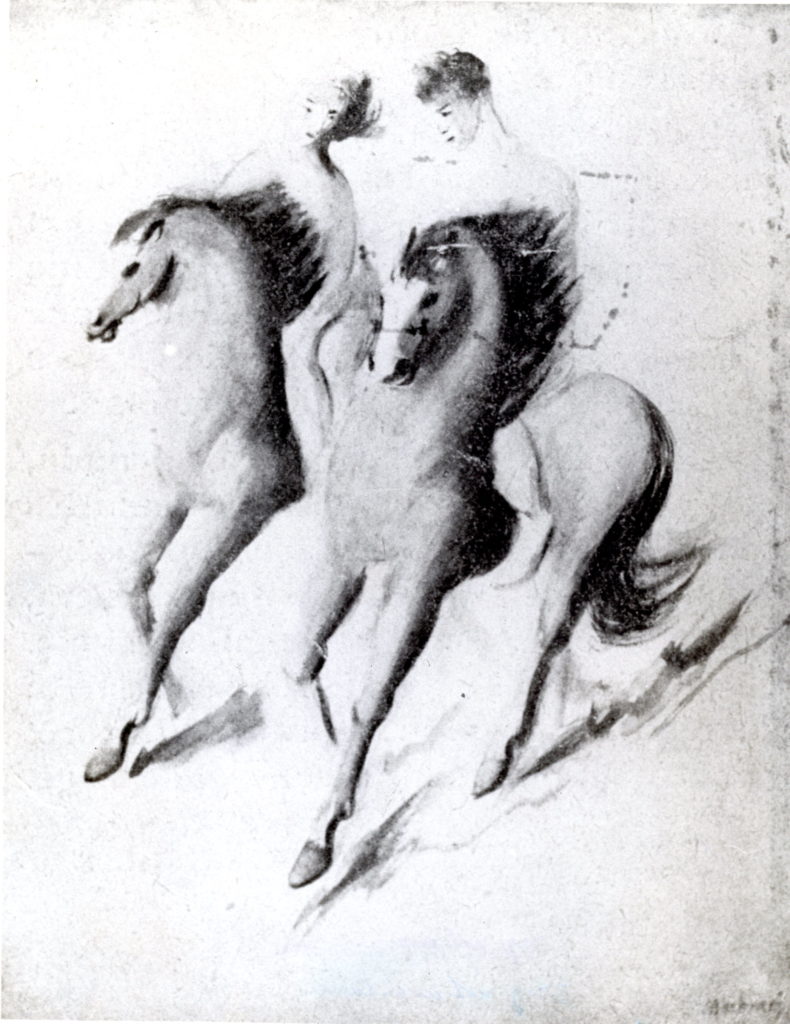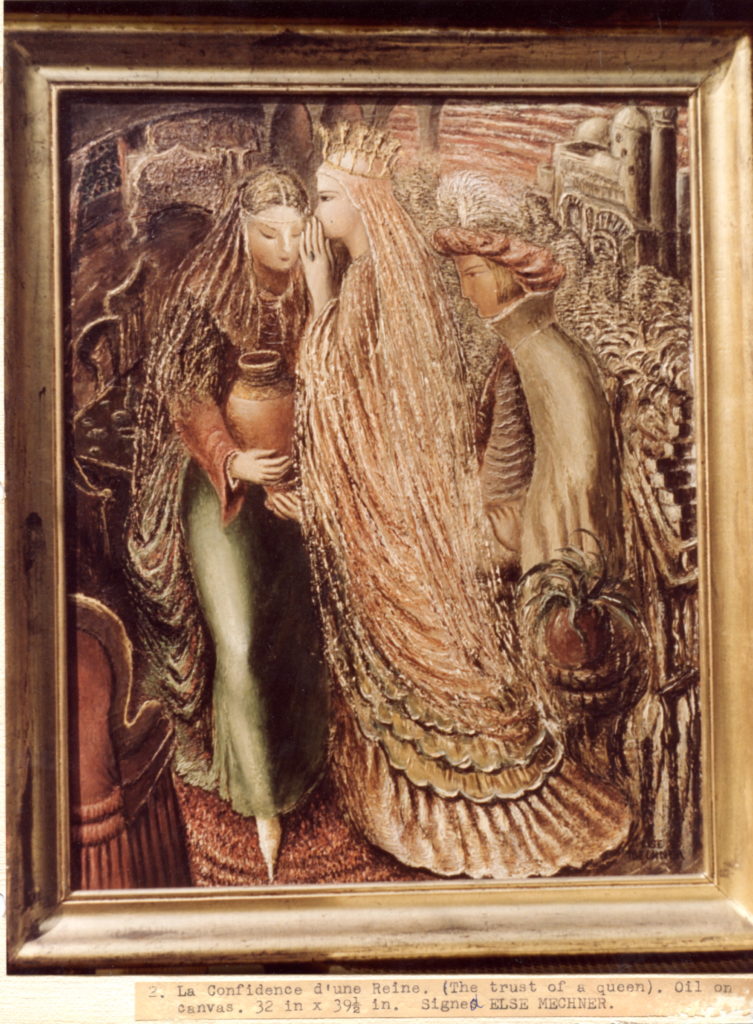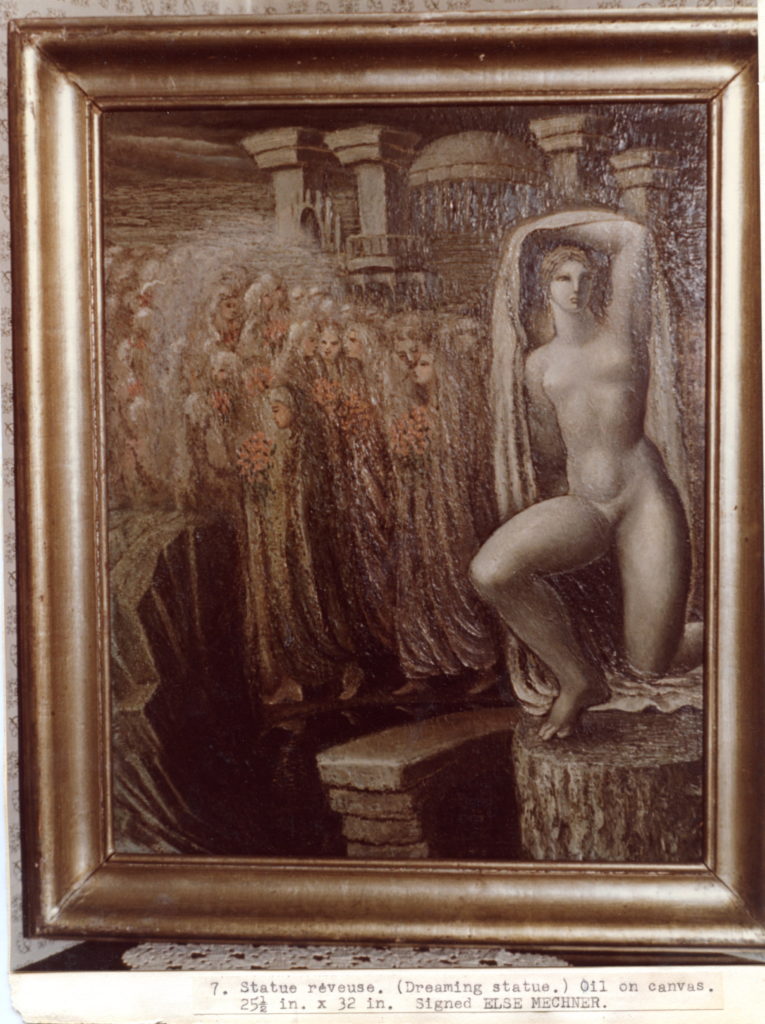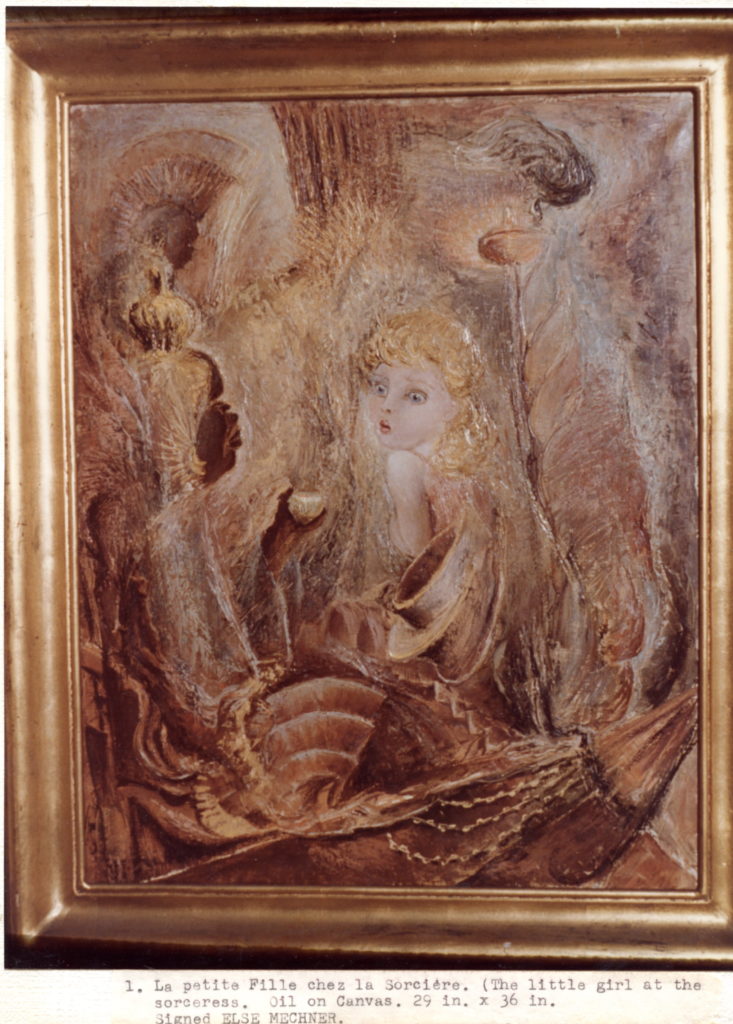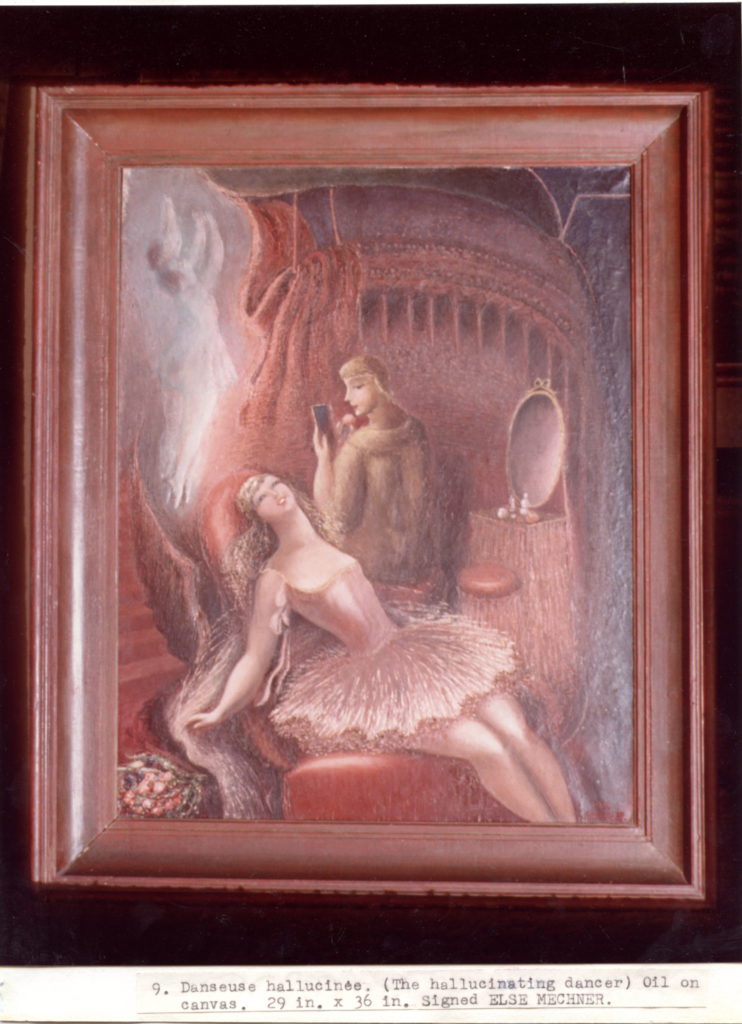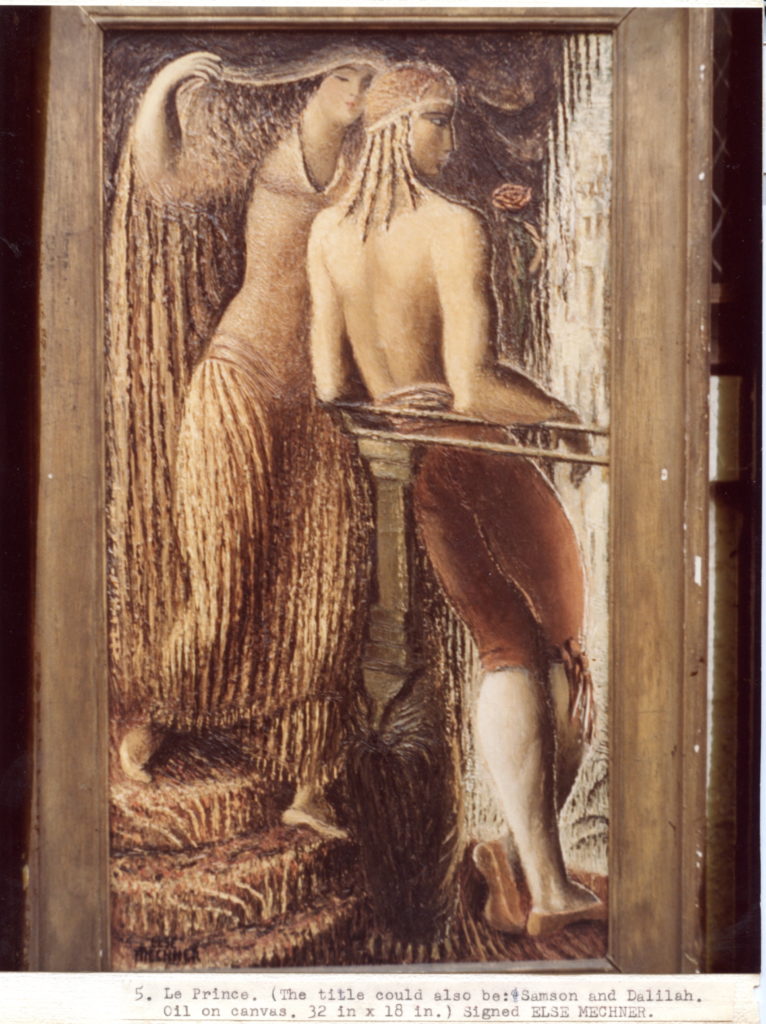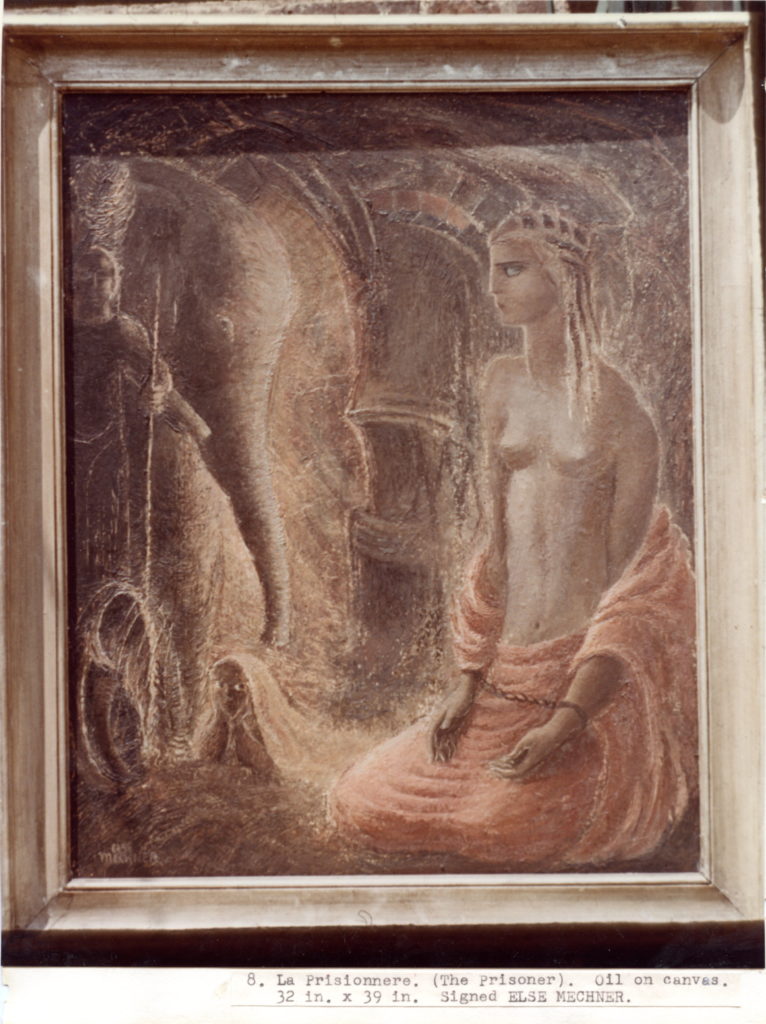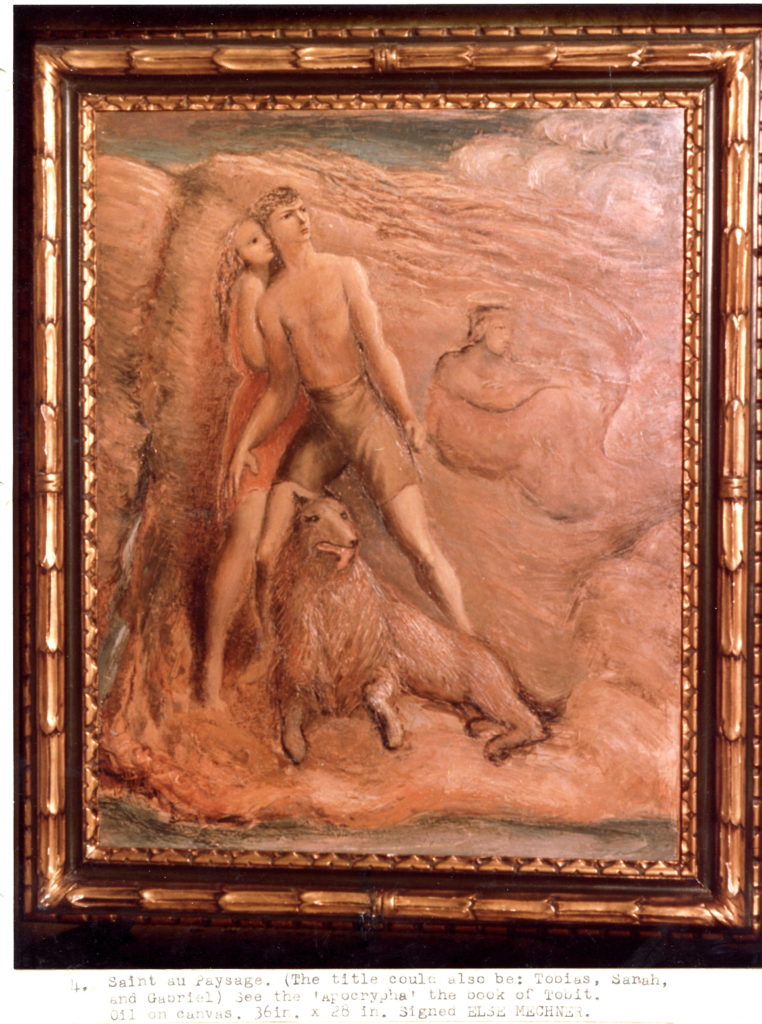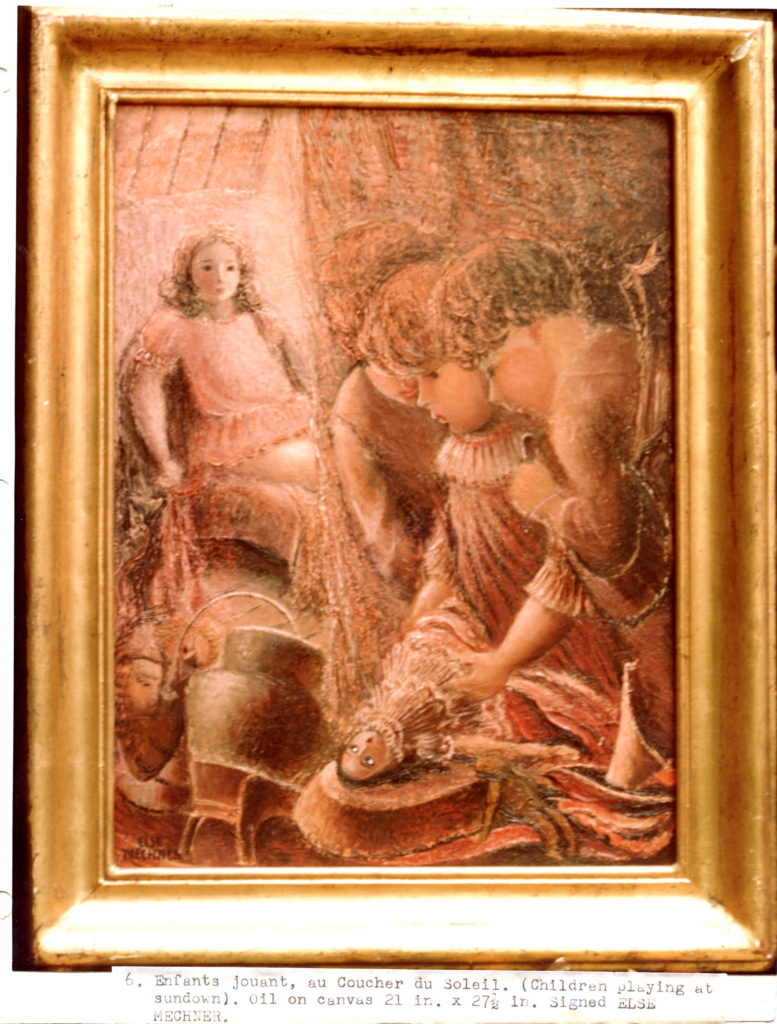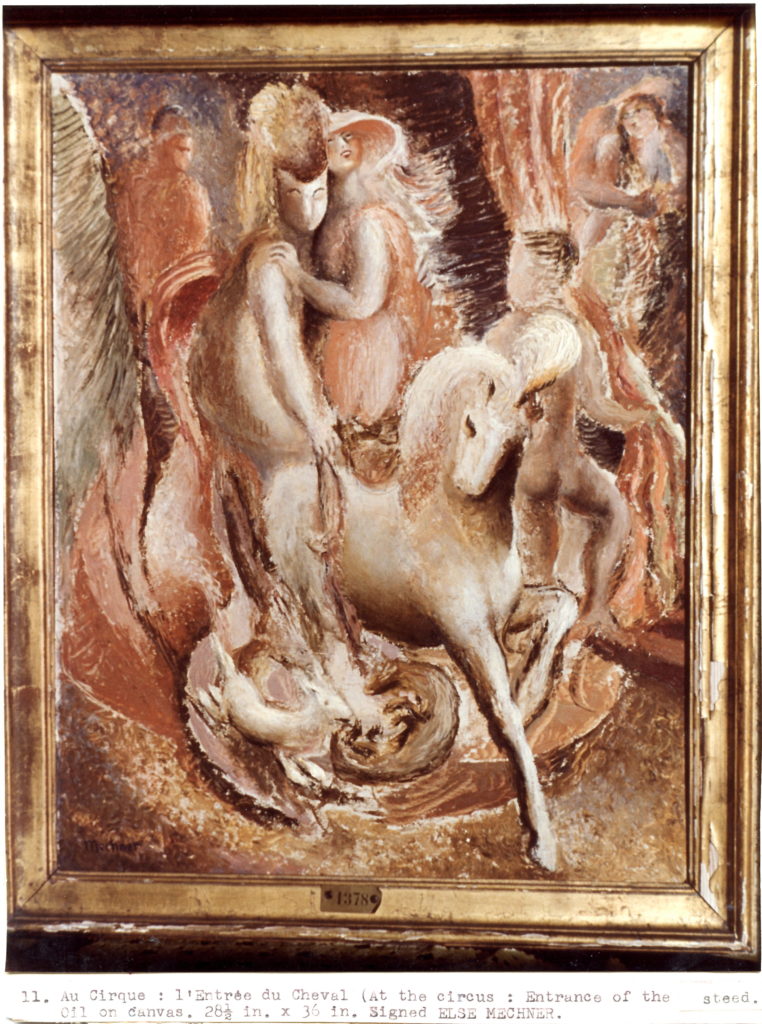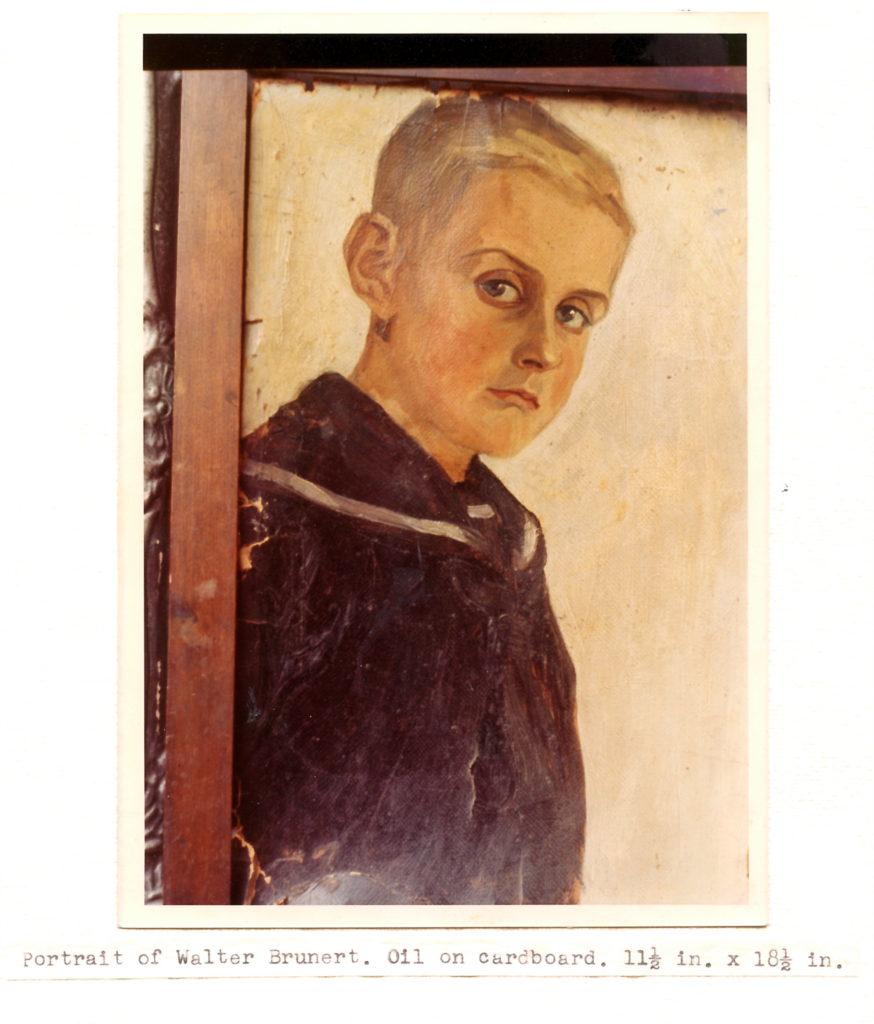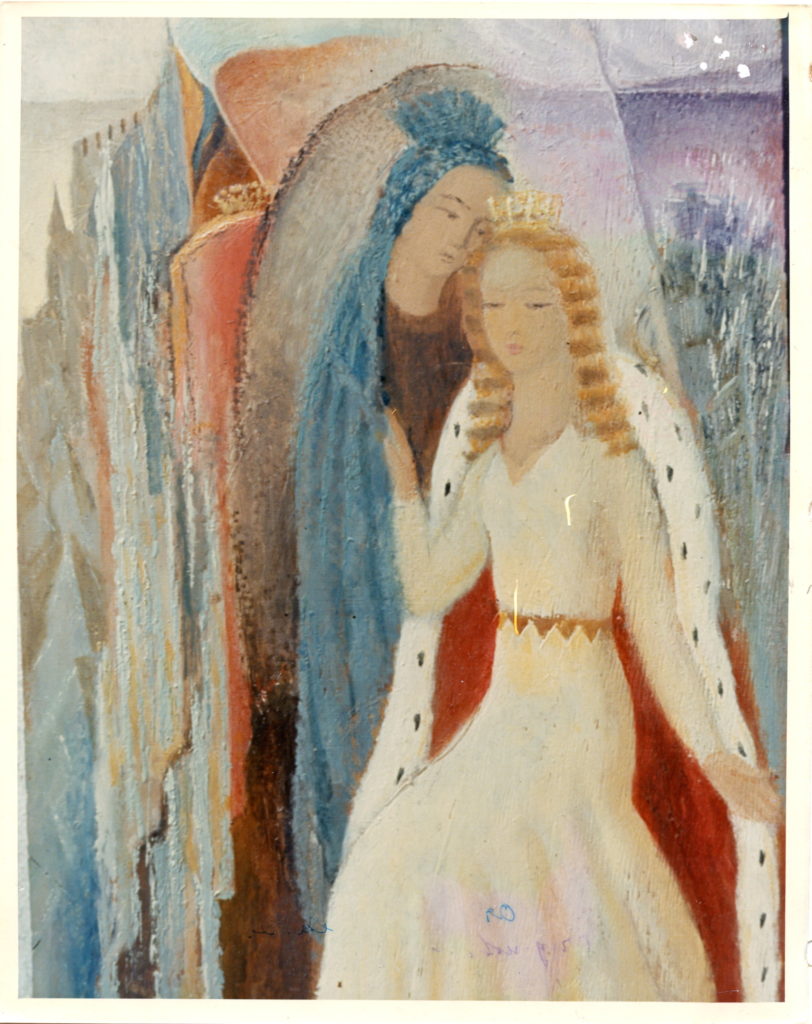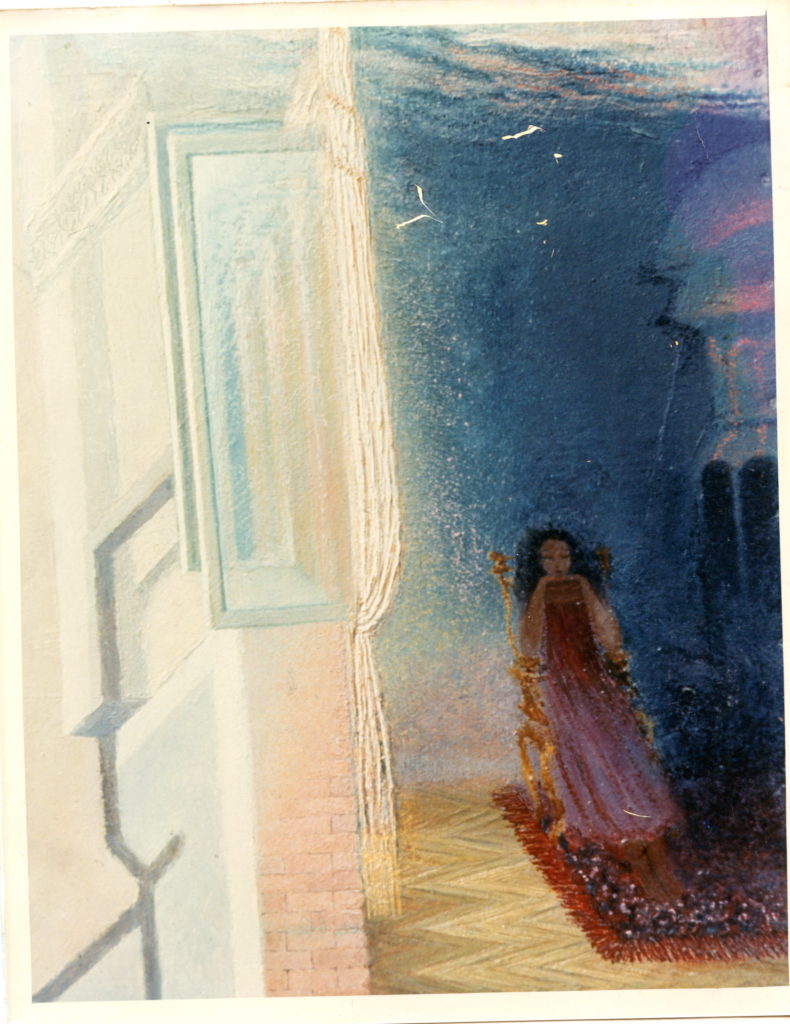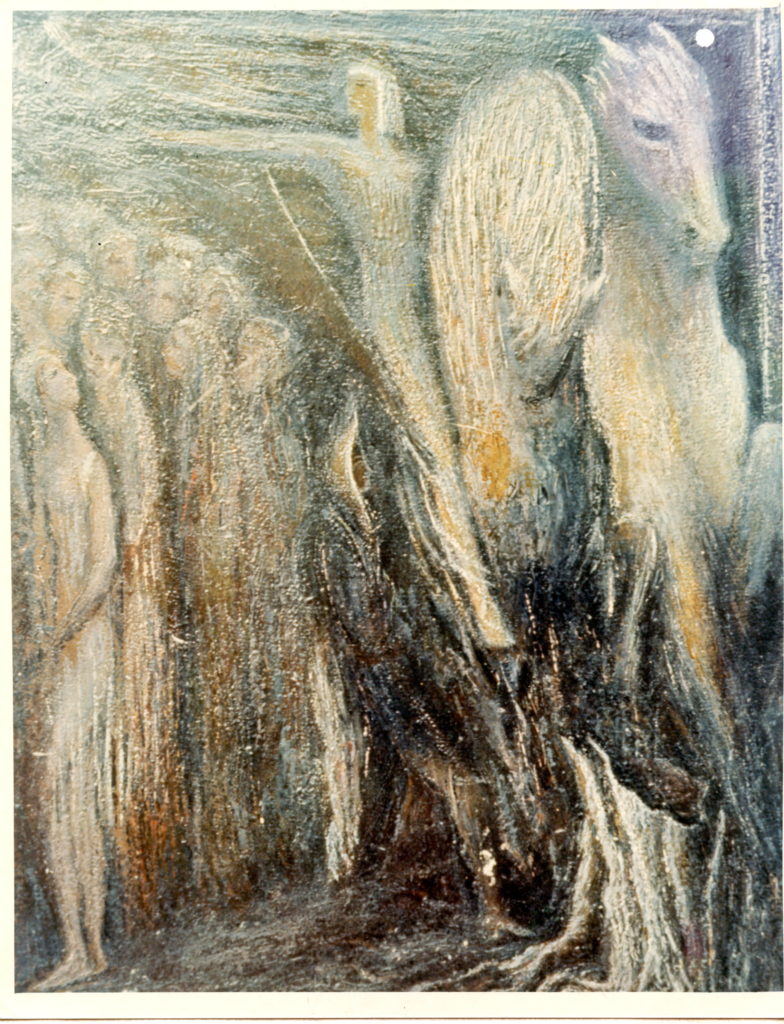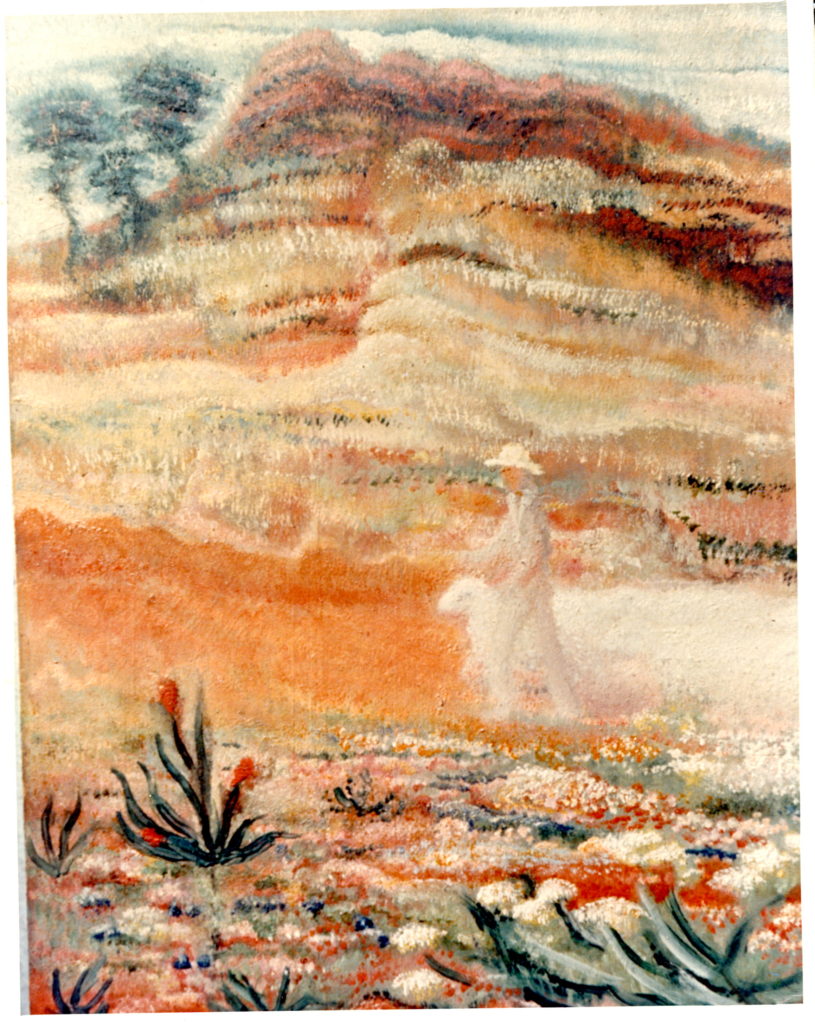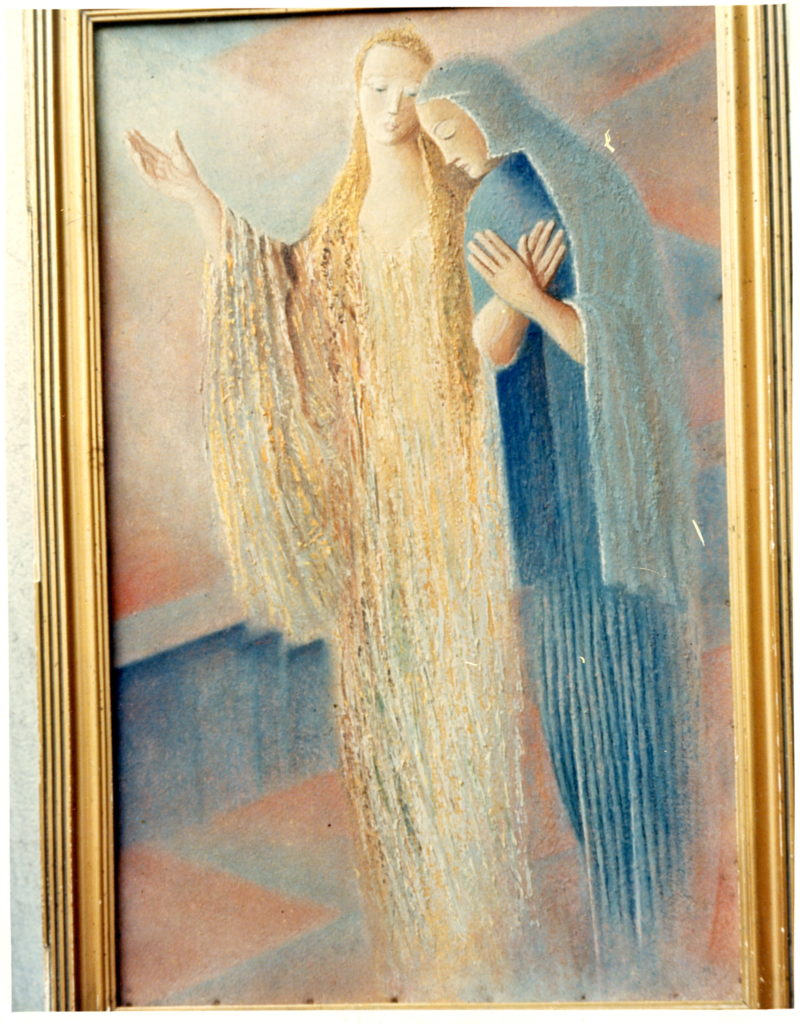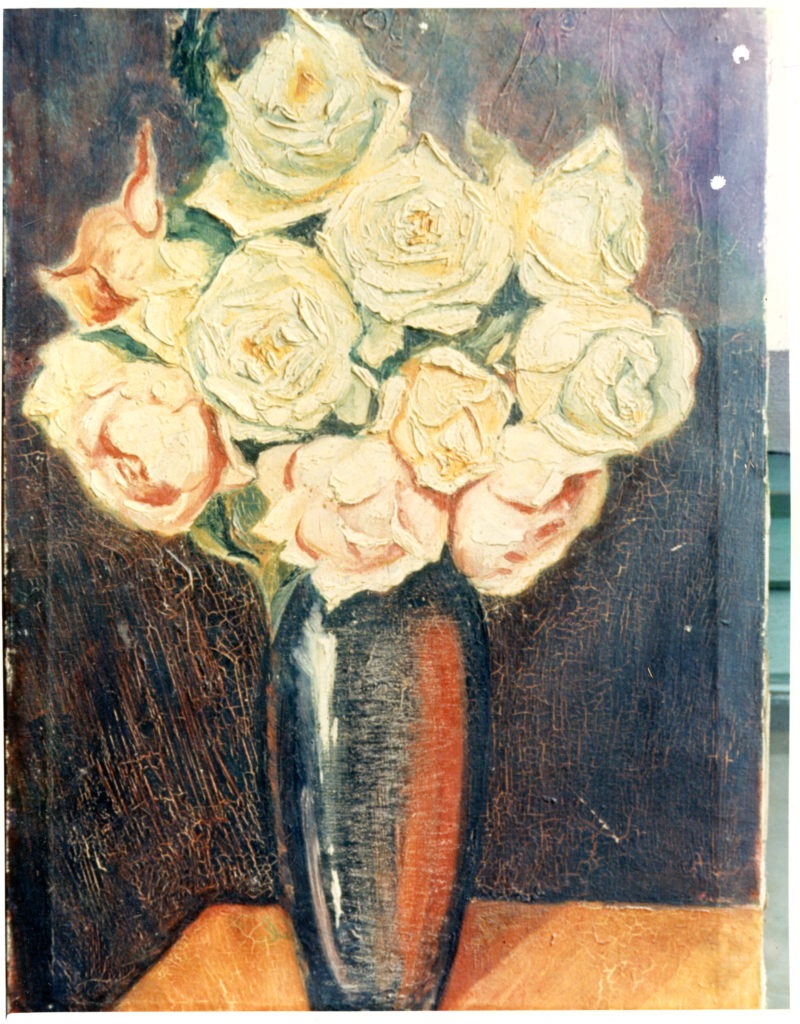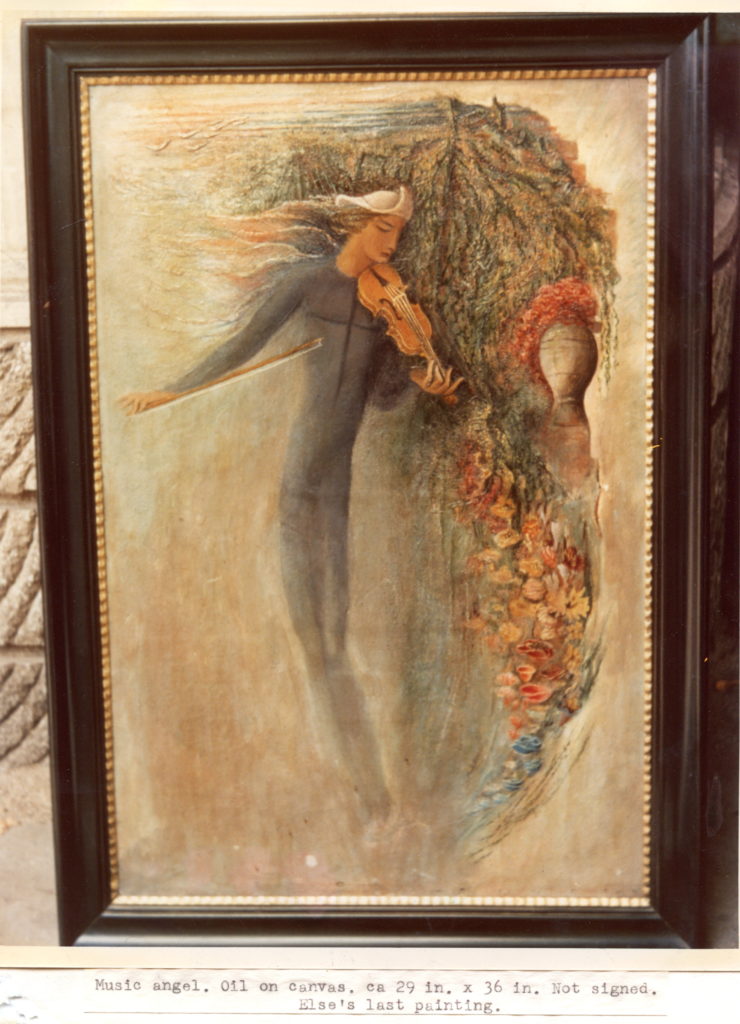Else Mechner was an Austrian painter who made her reputation in Paris before 1930. Today, there are 23 paintings in the possession of the remaining members of her family in New York and Rumania, and numerous other paintings of hers are scattered or lost. During the German occupation in World War II., a large number of her paintings were removed to Germany from Parisian galleries. Her career was cut short by a series of family problems, World War II., and then illnesses, which led to her death.
In Paris, prior to her departure in 1930, her work was widely acclaimed by the critics, and she was on the road to fame. While her unique and highly personal style defies easy classification, it is clear that it synthesizes many influences, ranging from the art of ancient Greece to romanticism and post-impressionism.
A selection of some of the critiques of her work written by some of the more prominent critics of the period during which she exhibited, provides a clue to the importance of her work:
“One does not explain aught but oneself, and the best preface to her paintings should have been written by madam Mechner herself. But she would not consent. She has renounced everything: sculpture, music, poetry, to express herself through color and line. In touching canvasses, she had attempted, in melodic flight, to establish imaginary forms and synthesize poem, sculpture, music. All this stems from a spiritualist and even mystical art. It is vision and symbol, steeped in biblical nuance and resounding with the psalms of Bach. It is an art that is longing, aspiring to enormous space, to gigantic frescoes, yet does not astonish from the palette of the artist, who came from Rumania to place red roses on the grave of Delacroix.
What is a work of art but a confession and especially when that work is such a reservoir of energy, a transmission of power, a fixed gesture continued with the observer. There is no beauty today without its tomorrow and there is much that is possible in the canvasses of madam Mechner. The contradiction to be avoided is to see in her a neoclassic. If she ever escapes, it will be through surrealism, full speed through a forest primeval, mounted on a snow-white charger.
Luc Benoist”
(of the conservation of the Louvre).
Three years later, the same art critic, on the occasion of another exposition, wrote the following:
“If art is imagination, the painting of madam Mechner is the real thing. It is rare to find her suggestive power of the ideal work with such little loss of her strange spontaneity. It is just as rare to behold an original temperament, which has succeeded in discovering for itself a personal technique. Here is a brilliant palette, one that has not lost any of its depth, a seductive art, or rather enchanting, I should say, it is one that would be astonishing to me if not enjoyed.
Luc Benoist”.
“An amazement of the eyes, Else Mechner evoked creatures of the most beautiful fairy tales. Inspired by Viviane or Melusine, she possesses the gift of converting into gossamer of pure gold the colored pigments, which the paint merchant sells to his customers. Her paintings achieve a decorative abundance of luminous beauty, which is renewed again and again and becomes a source of constant and continued pleasure. The eye finds in them a new arabesque, alive with amazing grace and merging into a blend of tones seldom seen. Her paintings stand as marvelous fruits of a vital temperament and of sure artistic intuition.
Jean de Hoorn”.
(Echo de Paris).
“In her first exhibition, madam Else Mechner had endowed her canvasses with such passion and creative fantasy that her paintings constitute a sincere expression of what she thought and conceived. It is evident that hers is an expression of art, wherein the temperament of the painter is indeed unusual and original. Here are new canvasses. To this flame, this passion, this urgent need to escape from herself, the artist adds qualities of brilliance. We consider the new canvasses of Else Mechner truly remarkable works.
Andris Warnod”
(art director: Comedie).
“The painting of Mme. Else Mechner is a comprehensive art containing all others. It is at the same time poetic, musical, architectural. It transforms the tangible aspects of nature through a work of the spirit and lends them a dreamlike quality, replete with an illusory, yet permanent beauty. A certain hellenistic spirit permeates her work, and one feels all the motivation of the artist for the “Idea” and the perfection of form as well as her love for light and line.
Baron de Reulandt.”
I am bringing here a number of reproductions of Else’s paintings, rather all I have. At first two paintings from a series of 30 paintings which were stolen, either by the Germans during their occupation of Paris or by the owners of the Gallery Zivi, where the paintings were stored. Then 12 paintings, which I had brought from in very good reproduction, though the colors are quite different from the originals. Following that a number of paintings, which Else had produced while in Czernowitz and later in Bucharest, where they are now in the s possession of Carl.
